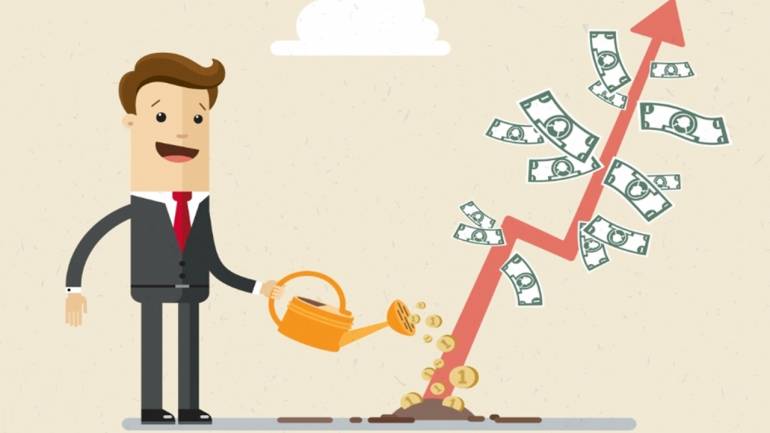The world economy is dynamic and strong evidence of this is seen in the form of reduced purchasing power of money. As inflation rises, prices of goods and services continue to rise. To measure the impact of inflation on rising costs, there is a concept called the cost inflation index. This is primarily used to estimate the increase in prices of goods and assets every year as a result of inflation.
The Central Board of Direct Taxes (CBDT) recently shared the latest Cost Inflation Index (CII) value applicable for FY 2022-23. The CII has risen from 317 to 331 within a year. Let’s have a look at the concept of the cost inflation index and how it works.
Concept of CII demystified
CII is a tool used to calculate the inflation-adjusted increase in the price of an asset. The CII chart is annually determined by the central government, which then publishes it for inflation calculation purposes. CII value is also used to calculate long-term capital gains arising from any transfer or sale of capital assets.
CII is calculated using the base year, which is the first year and is set at 100. The calculation of the following years helps in checking the rise in inflation as against the base year.
Understanding CII usage for indexed cost
The below-mentioned formula is used to calculate the inflation-adjusted cost price:
(CII for sale year/CII for purchase year)*cost price
Here’s an example to understand this calculation.
Suppose Ms Swati bought a house in the year 2001 for Rs. 10 lakhs. She sold the flat in 2019. What is the indexed cost of purchase?
The CII in 2001 was 100 and in 2019 was 289. Hence, the indexed cost in this case will be 10,00,000 x 289/100 = ₹28,90,000.
Why is CII calculation needed?
Some of the reasons why CII calculation is essential are:
- CII chart helps verify the overall price rise against the inflation rate. It also helps in better understanding the constant price rise across different goods and services. For example, if two packs of wheat cookies are available for Rs. 100 today, how many will one be able to buy tomorrow as inflation continues to rise? Changes in prices can be studied over time with the help of CII.
- While calculating long-term capital gains or losses, one must use the inflation-adjusted price of the asset. This is where CII comes into the picture as it is used to estimate an asset’s inflation-adjusted cost price. The CII figure thus helps in computing the inflation-adjusted value of assets like buildings, houses, gold jewellery, etc.
- By using CII for determining long-term capital gains, one can get an estimate of tax liability while filing income tax returns (ITR).
Did you know?
CII cannot be used for estimating the inflation-adjusted cost of equity shares and equities mutual funds while calculating gains for tax purposes. The long term gains from these are taxed at a 10% tax rate without any indexation benefit.
Historical CII figures
The table below shows the CII numbers starting from 2001 up to now:
| Financial Year | CII |
| 2022-23 | 331 |
| 2021-22 | 317 |
| 2020-21 | 301 |
| 2019-20 | 289 |
| 2018-19 | 280 |
| 2017-18 | 272 |
| 2016-17 | 264 |
| 2015-16 | 254 |
| 2014-15 | 240 |
| 2013-14 | 220 |
| 2012-13 | 200 |
| 2011-12 | 184 |
| 2010-11 | 167 |
| 2009-10 | 148 |
| 2008-09 | 137 |
| 2007-08 | 129 |
| 2006-07 | 122 |
| 2005-06 | 117 |
| 2004-05 | 113 |
| 2003-04 | 109 |
| 2002-03 | 105 |
| 2001-02 | 100 |
In Budget 2017, the government announced that the base year for CII calculation will be moved from 1981 to 2001 since taxpayers would find it was difficult to obtain appropriate information on cost of assets purchased before 1981.
Conclusion
It is important to note that the CII number can only be used to calculate the inflation-adjusted cost for certain assets that allow indexation benefits. Thus, it cannot be used to estimate Long term capital gains/losses on equity or equity mutual funds and any annual gains above Rs. 1 lakh are taxable at 10% without indexation benefit.
FAQs
Capital gain arises when the returns from the sale of a capital asset are higher than its cost price. Since the cost price is historical, arriving at an indexed cost lets the taxpayer account for the impact of inflation on it. Thus, after using CII, one can arrive at the true cost of the asset and thereby, lower the capital gains amount to reduce the tax liability.
No, short-term capital gains are not eligible for indexation benefit. Thus, gains derived from selling any asset within 2 years of purchase cannot be adjusted for indexation.
Yes, indexation can be applied on the cost of asset improvement if the asset has been held for more than 2 years.
Indexation benefits cannot be applied on bonds, debentures, and RBI-issued sovereign gold bonds.
In case an asset is purchased before the base year of CII or 2001, the asset purchase price can be higher of the fair market value of the asset or its actual cost as on the 1st day of the base year. Indexation benefit can then be applied after arriving at the cost.




















